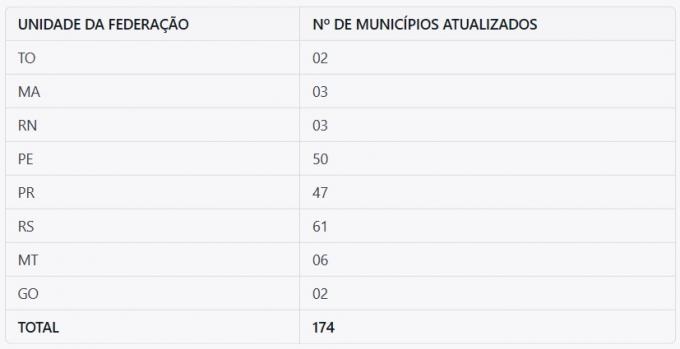With the movement of the flags accentuated in the 18th century, the interior region of Brazil, better known as Sertão or hinterland, started to be occupied by the pioneers. The Flags had as main objectives both the search for indigenous peoples to enslave and the search for precious metals (gold, silver).
In the 1690s, the Bandeirantes managed to find gold in the region that was later called Minas Gerais, another location where gold was explored, in the year of 1719, it was in the village of Cuiabá (capital of today's Mato Grosso), so the Bandeirantes soon thought of the territory that was between Minas Gerais and Cuiabá (future Goiás). The Bandeirantes were also able to find and exploit this precious metal in the region between the two gold mines.
In 1682, the sertanista (bandeirante) Bartolomeu Bueno organized a Flag towards the Brazilian hinterland; with his 12-year-old son he broke into the woods and reached the interior of Brazil.
With the death of Bartolomeu Bueno (both the date and the reasons for the death of the bandeirante are imprecise), his son Bartolomeu Bueno da Silva tried to remake his father's expedition some 40 years later, in 1722. The Anhanguera, as Bartolomeu Bueno da Silva became known, managed to find and mine gold on the banks of the Red River in 1725. First he founded the village of Barra and then the Arraial de Sant'Anna, with the large amount of gold that was extracted from the mines, the Arraial, due to its economic importance for the Portuguese Crown, it was elevated to the category of Vila, and in the mid-1750s it was named Vila Boa de Goiás.
Until the year 1749, Goiás did not exist, the territory belonged to the captaincy of São Paulo, only from that date onwards did the captaincy of Goiás appear. The main villages and camps arose at the time of mining, in the 17th century, they were constituted by nuclei unstable and irregular urban areas, the first governor sent to the new captaincy was Dom Marcos de Noronha (Count of Bows).
Mining in Goiás had its peak in 1750, from 1751 to 1770 the extraction and exploitation of gold was decreasing drastically, from the year 1770 onwards, mining began to decay, which led to the abandonment of many villages. Goiás.
The Brazilian independence movement in the 19th century did not change the social and economic situation of Goiás, some oligarchic groups became they stood out during the imperial period and remained in power until the first decades of the 20th century, as the Bulhoes, the Fleury and the Whitewashed. In 1818, by royal charter of Dom João VI, the village became Cidade de Goiás.
After Mining, the economy of Goiás in the 18th and 19th century started to dedicate itself more to activities related to livestock and agriculture. In the 20th century, Goiás developed agriculture as its main economic activity. However, during the first three decades of this century, Goiás continued to be linked to the oligarchic policy of the First Republic.
The abolition of slavery, in 1888, did not change the working and living conditions of slaves who lived in Goiás. In fact, the population of Goiás was made up of a black majority and a white minority.
In the 20th century, the Caiado oligarchy took over the political power of the state until the 1930 Revolution. Getúlio Vargas, who had installed the Revolution, monopolized power and appointed the interventor Pedro Ludovico Teixeira, who opposed the Caiado.
One of Pedro Ludovico's first political acts was to carry out the transference policy of the capital. First, he carried out a survey to choose the location where the new capital would be built, the chosen region was close to the city of Campinas (Campininha das Flores). Then began the construction works of the new capital, Goiânia, in 1933. The capital was transferred by decree in 1937, sealing the end of more than 200 years of the City of Goiás as the state capital.
Leandro Carvalho
Master in History
Source: Brazil School - https://brasilescola.uol.com.br/historiab/historia-goias.htm

